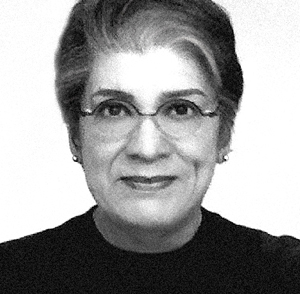Related Research Articles
"La Bamba" is a Mexican folk song, originally from the state of Veracruz, also known as "La Bomba". The song is best known from a 1958 adaptation by Ritchie Valens, a Top 40 hit in the U.S. charts. Valens's version is ranked number 345 on Rolling Stone magazine′s list of the 500 Greatest Songs of All Time.

Los Four was a Chicano artist collective active based in Los Angeles, California. The group was instrumental in bringing the Chicano art movement to the attention of the mainstream art world.
Elsa Flores is a well known Chicana street artist. Her mother's name was Maria Valenzuela and she was originally from a small village called San Javier located in Sinaloa, Mexico. She is one of the best known members of the Chicano street art movement.

Son jarocho is a regional folk musical style of Mexican Son from Veracruz, a Mexican state along the Gulf of Mexico. It evolved over the last two and a half centuries along the coastal portions of southern Tamaulipas state and Veracruz state, hence the term jarocho, a colloquial term for people or things from the port city of Veracruz.

Son huasteco is one of eight Mexican song styles and is a traditional Mexican musical style originating in the six state area of Northeastern Mexico called La Huasteca. It dates back to the end of the 19th century and is influenced by Spanish and indigenous cultures. Usually it is played by a Trio Huasteco composed of a guitarra quinta huapanguera a Jarana huasteca and a violin. Singers will often use the falsetto register. The son huasteco is particularly noteworthy for its flamboyant and virtuoso violin parts, although the style varies from state to state. Footwork often danced to son huasteco is the Zapateado. Improvisation plays a strong role in the style, with musicians creating their own lyrics and arrangements to a standard repertoire. Typical sones huastecos are "Cielito Lindo", "La huazanga", "La sirena", "El querreque" and "La cigarra".

Quetzal is a bilingual (Spanish-English) Chicano rock band from East Los Angeles, California.

Los Cenzontles is a Mexican-American group, cultural arts academy, and media production studio, that promotes Mexican roots music through research, performance, education, musical recordings and videos. They are based in the working-class city of San Pablo, California where they form the core of Los Cenzontles Cultural Arts Academy, where the members of the group were trained. Los Cenzontles have revived and promoted little known styles of Mexican regional music since 1989. The group has collaborated with numerous artists that include David Hidalgo, Linda Ronstadt, Los Lobos, Ry Cooder, Taj Mahal, Jackson Browne, The Chieftains and Flaco Jimenez, among others. Los Cenzontles has produced 30 tradition-based and cross cultural albums, 4 documentaries, and hundreds of video shorts available on their YouTube channel.
Son de Madera is a son jarocho band based in Veracruz, Mexico. Its core members are Ramón Gutiérrez Hernández, Tereso Vega, and Rubí Oseguera Rueda. The band was founded in 1992 by Ramón Gutiérrez and Laura Rebolloso.

Los Tucanes De Tijuana are a Mexican norteño band led by Mario Quintero Lara. The band was founded in Tijuana, Baja California in 1987. They, along with Los Tigres del Norte, were pioneers in playing their music in a rougher manner as opposed to the traditional norteño music of northeastern Mexico; subsequently influencing many other norteño artists from Mexico’s pacific states and giving that region of the country its signature norteño sound. During their career, Los Tucanes de Tijuana have garnered several awards and recognitions, including a Latin Grammy in 2012 for the album 365 días, five Grammy Award nominations, nine Lo Nuestro Awards nominations and multiple BMI Awards for Quintero as a composer. They are the first norteño music band to obtain an international film award by winning the Un Certain Regard Angel Film award at the Monaco International Film Festival for their participation in the documentary Los ilegales. In 2008, the group received a star on the Las Vegas Walk of Fame.

Judithe Hernández is an American artist and educator, she is known as a muralist, pastel artist, and painter. She a pioneer of the Chicano art movement and a former member of the art collective Los Four. She is based in Los Angeles, California and previously lived in Chicago.
Los Soneritos is a group dedicated to Mexican folk music and dance, founded in 2005 in Colima by Omar Alejandro Rojas Ramos. Rojas Ramos formed the group while working at a primary school, giving classes in music and dance. It was formed with the express intention of preserving and promoting folk music and dance to youths and children. The group mostly performs music and dance from its home state of Veracruz such as son, fandango and zapateado, but other similar music such as son from the west of Mexico and the “mitote folkorico” is also in the repertoire. Members of the group have done research about traditional music and dance as well as composed their own original pieces.

Son mexicano is a style of Mexican folk music and dance that encompasses various regional genres, all of which are called son. The term son literally means "sound" in Spanish, and is also applied to other unrelated genres, most notably son cubano.
Cambalache is a Son Jarocho band based in East Los Angeles, California. They are the one of key bands at the center of the son jarocho explosion in Los Angeles in 2010s.

Martha Gonzalez is a Chicana artist, activist, musician and feminist music theorist. She is an associate professor in the Intercollegiate Department of Chicana/o Latina/o Studies at Scripps College. She is also a lead singer, percussionist, and songwriter for the band Quetzal, which won a Grammy Award for Best Latin Pop, Rock or Album in 2013. In 2022, Gonzalez was named a MacArthur Fellow by the MacArthur Foundation.

Papa's Dream is a children's album by Los Lobos with Lalo Guerrero, released in 1995 through Music for Little People/Warner Bros. It features, among others, the Children's Coro of Los Cenzontles Musical Arts Center of San Pablo, California.

The Eastside Café is an autonomous community organization founded in 2004 in the United States, located in El Sereno, Los Angeles, California. The collective is run by El Sereno residents and is inspired by the Zapatista movement, which sought the rights and autonomy of indigenous communities in Chiapas, Mexico in the early 1990s. Despite the name, the locale isn't a coffee shop, but rather an East Los Angeles cultural center.
Esteban Adame is an East Los Angeles DJ who emerged from the Chicano/Latino rave or party scene in the 1990s. He started DJing at the age of 15. In 2004, he was asked by "Mad" Mike Banks of Underground Resistance to join the music collective in Detroit, Michigan. Banks reportedly was interested when he "found out Chicanos from Southern California were interested in UR records, sensing a common ground between Los Angeles's Latino enclaves and the Black neighborhoods of Detroit." Adame would go on to play piano for the label's electronic jazz band Galaxy 2 Galaxy.

Sol Pereyra is an Argentinean singer, musician and composer who began her solo career in Mexico in 2009. She has received three nominations for the Gardel Awards, for her album Tírame agua (2014), for her single "Antireversa" (2019) and for her album Resisto (2020) in the best alternative pop album category.
Frank Edward Romero is an American artist considered to be a pioneer in the Chicano art movement. Romero's paintings and mural works explore Chicano and Los Angeles iconography, often featuring palm trees and bright colors.

Lupita Infante Esparza is an American singer-songwriter. She sings traditional mariachi, norteño, and ranchera music. Infante's debut studio album La Serenata (2019) was nominated for a Grammy Award for Best Regional Mexican Music Album. In 2020, her song "Dejaré" was nominated for a Latin Grammy Award. Infante advocates for women's empowerment through her music.
References
- ↑ "Full Biography". MTV Networks . Retrieved February 9, 2013.
{{cite web}}: CS1 maint: url-status (link) - ↑ El Sereno Eastside Café Website
- ↑ San Roman, Gabriel (December 18, 2015). "Las Cafeteras Accused By Former Bandmate Of Being Sexist Sellouts". OC Weekly. Archived from the original on December 3, 2019. Retrieved April 10, 2020.
- 1 2 Johnson, Reed (October 27, 2012). "Las Cafeteras says it nows --and you know – "It's Time"". Los Angeles Times. Retrieved February 9, 2013.
{{cite web}}: CS1 maint: url-status (link) - ↑ "Las Cafeteras". Folklore, Inc. Archived from the original on January 10, 2014. Retrieved January 20, 2014.
- ↑ Romero Mata, José (November 4, 2012). "Las Cafeteras presentan su primer álbum con son jarocho". La Opinion. Retrieved January 20, 2013.
{{cite web}}: CS1 maint: url-status (link) - ↑ Yáñez, Alonso (November 3, 2012). "La Bohemia: Las Cafeteras y su misión por un cambio positivo con jarana". Univision. Retrieved January 10, 2013.
{{cite web}}: CS1 maint: url-status (link) - ↑ NPR Staff (September 30, 2012). "Son Jarocho, The Sound Of Veracruz". NPR. Retrieved January 2, 2013.
{{cite web}}: CS1 maint: url-status (link) - ↑ Tompkins Rivas, Pilar (January 2, 2013). "Las Cafeteras: Crossing Genres to Become Agents of Change". KCET. Retrieved February 9, 2013.
{{cite web}}: CS1 maint: url-status (link)